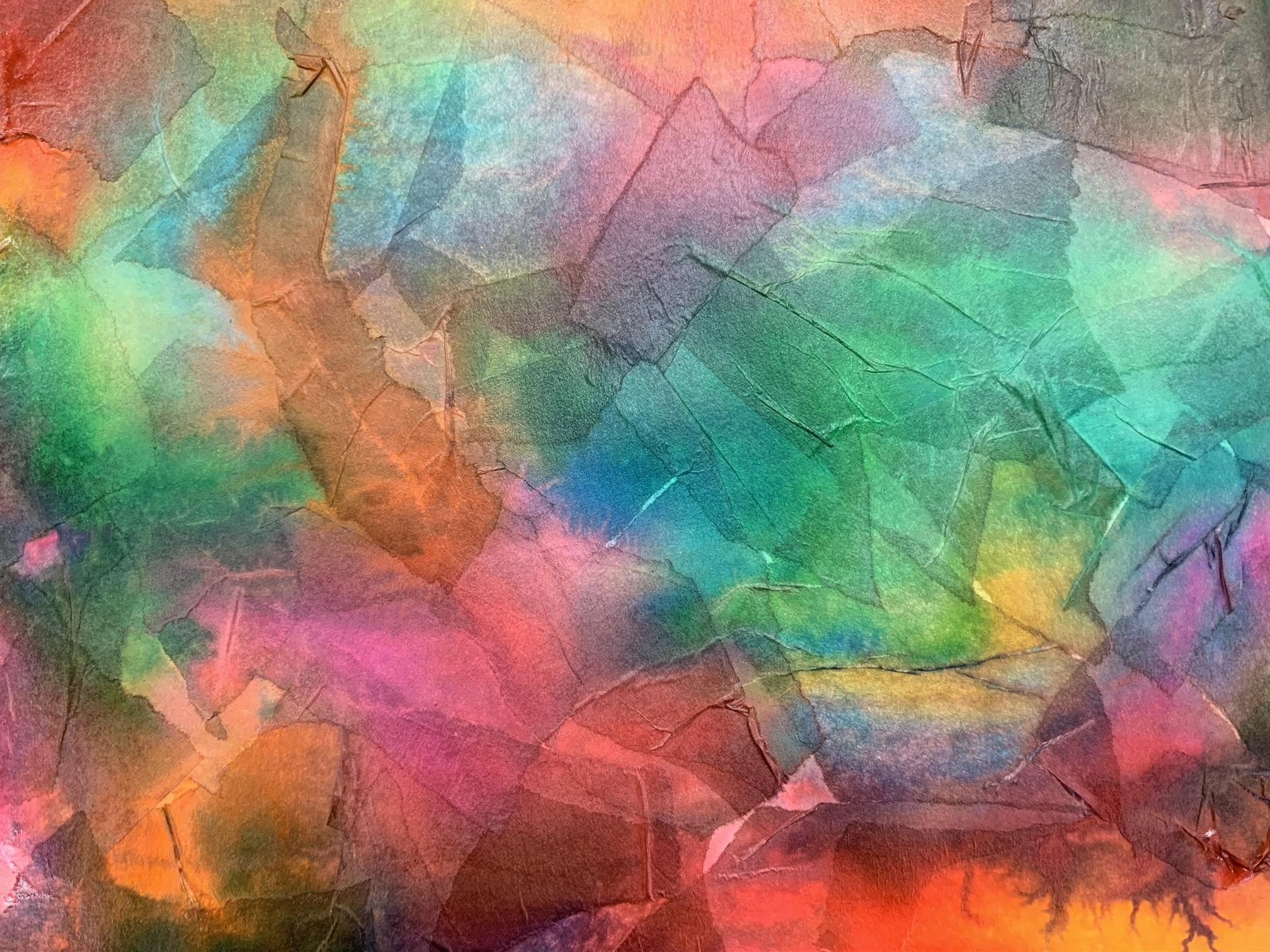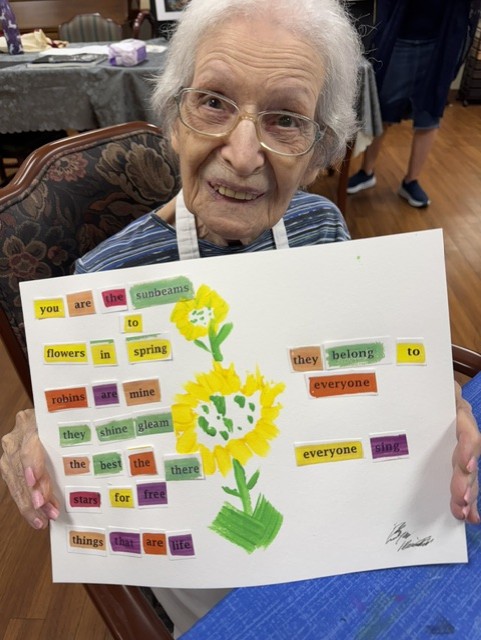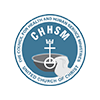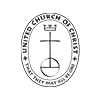Opening Minds through Art is an evidenced, research-based program. It trains and pairs volunteers with residents living with dementia in order to empower the resident to create a work of abstract art. At the conclusion of several sessions their artwork is displayed during an art show at which their family, friends and their community gather to celebrate the resident artists and their creations. United Church Homes leadership was first introduced to the program about six years ago.
A Chaplain’s Work
At a Conference on Spirituality and Aging in California that same year, I met a chaplain who served in a senior care organization in Ontario, Canada. When I mentioned that I was from Ohio, she immediately offered that she had recently been to the buckeye state to attend training through Miami University for their OMA program.
She also mentioned that she had been the first chaplain to be trained in the program. My internal wheels began to spin.
Upon returning from the conference, I shared this conversation with our CEO. Immediately we knew one of our chaplains who would love this program. And the following spring she was the first of two UCH staff who completed the training. Since then, seven UCH communities in Ohio offer OMA for their residents. Four of our chaplains have been trained in the program and are champions for this work with their residents.
For some, this may not make much sense. What does a research-based program that uses paints and glitter, markers and abstract images have to do with one’s spiritual life? Well, in fact, there are many connections. Below are some observations and reflections from several of our chaplains.
Connections Beyond Self
Spirituality involves connecting with others beyond ourselves. It is attuned to the internal experiences, feelings and memories we have through relationships with the sacred, with creation and with others. These relationships connect us to what we believe is larger than ourselves. This is important in finding meaning and purpose.
“For me, key aspects or goals of chaplaincy include nurturing connection, meaning making and fostering a sense of purpose. OMA supports each of these. The one-on-one relationship of artist and volunteer builds connection. The exploration of color and texture in the creative process, as well as the interpretation of the finished work is about making meaning. And the celebrations with families and the larger community at the end of the sessions supports the sense of purpose as the artists receive recognition for their efforts.”
-Rev. Dale Brown, The United Church Homes Community at Beavercreek
Gift of Creative Energy
The life of the spirit is also intimately entwined with the creative energy around us. When we create an image, a picture, or an abstract collage on a blank page, we can participate in the creative work of the Spirit. It is important to see how a blank page can become a thing of beauty revealing and connecting the artist and the world around them.
“The reason I facilitate OMA as a chaplain is that I witness an aliveness happening in the souls of all the participants. I have seen both residents and volunteers be inspired and overflowing with joy from the sessions. And that joy extends out into the community. Making art together, most importantly builds relationships, connections. And that is what life is about. That is the heart of the spirit-filled life. To me, OMA is like making the song “I’ve got the joy, joy, joy, joy down in my heart” come to life.
The other piece of this is the feeling of self-worth. Too often we doubt ourselves and our impact on making any difference. In an OMA session, you can tangibly see and feel the impact being made, as evidenced through the pre- and post- surveys of how the resident is feeling, as well as through the stories that are shared together during and after. OMA is good for the spirit. It refills (and overflows) our cup. The experience shines a bright spotlight on the power of love.”
-Rev. Erin Proie, The United Church Homes Community at Chapel Hill
Expressing Oneself
And these connections which the artist residents make with the volunteers during the creative process are strengthened through music and ritual that sets the time and place for each session. As our first OMA trained chaplain explains:
“I participate in OMA because it provides abundant life. And this is our vision for our residents, staff, families and volunteers. I see OMA as a spiritual activity because it allows the artist to connect outside of self in love through the medium of art. The trinity is a model of spiritual connection. Each member is separate yet connected in community. OMA allows for expression of self while being connected in community as well. Plus, it is fun!”
-Rev. Becky King, Dean of Chaplains, United Church Homes
Naming Their Reality
For myself, one who has not participated in the OMA sessions, but who has attended some of the art shows, I am struck by the titles which the artists give each work upon its completion. In naming their pieces, they share a glimpse of the connections they are making between the colors and shapes on the page and their own lived experience and emotions. They can see beyond the physical creations and appreciate the gift which their new art piece reflects back to them.
To participate in the creative process, each artist is giving a visual voice to feelings and experiences otherwise left unexpressed. They conquer fear that can pause the hand before the movement of the first strokes on the page. The artists gain courage to complete the project. Their curiosity is engaged as they consider various colors or techniques inviting them into something new. And they delight in owning the title of “artist” because it indicates that their family and friends appreciate the gifts they have to offer the community—a sign of being worthy of receiving love.
Elizabeth Lokon, founder and director of OMA at the Scripps Gerontology Center at Miami University additionally points out that “the residents are teaching the volunteers about important life lessons like kindness, paying deep attention, and actively listening”. Again, these are all central to the spiritual life. She additionally points out that the residents teach her student volunteers not to be afraid of their own aging. “They learn that despite all that is going on with their partner’s life, the residents remain positive and full of hope.”
In one community, they conclude every session with the singing of “This Little Light of Mine”. You may remember this from your childhood: “This little light of mine, I’m going to let it shine. (x3) Let it shine. Let it shine. Let it Shine.” Through their creations, the artists are shining. They shine the light of hope in the world as they build new relationships, often across generations. And through all these relationships, they are able to connect with the creative energy of the Spirit at work in the world.
We are so appreciative of all who help to make this program possible and to the older adults who participate as they shine and glitter and color their light in the world. Like other forms of art, OMA provides a creative forum that makes connections beyond anything that we could imagine. This is most surely an important part of the spiritual care program and resources we provide in our UCH communities.
11/11/21 15:00
View all articles by:






















